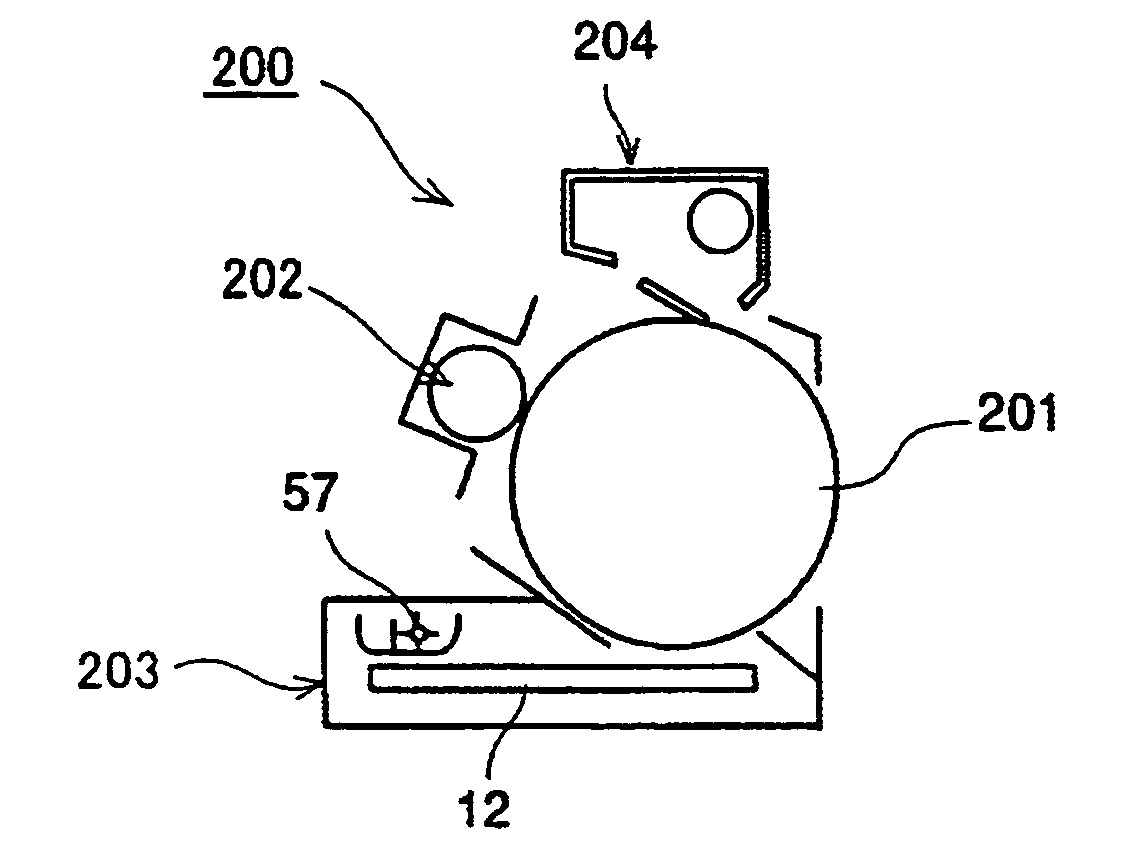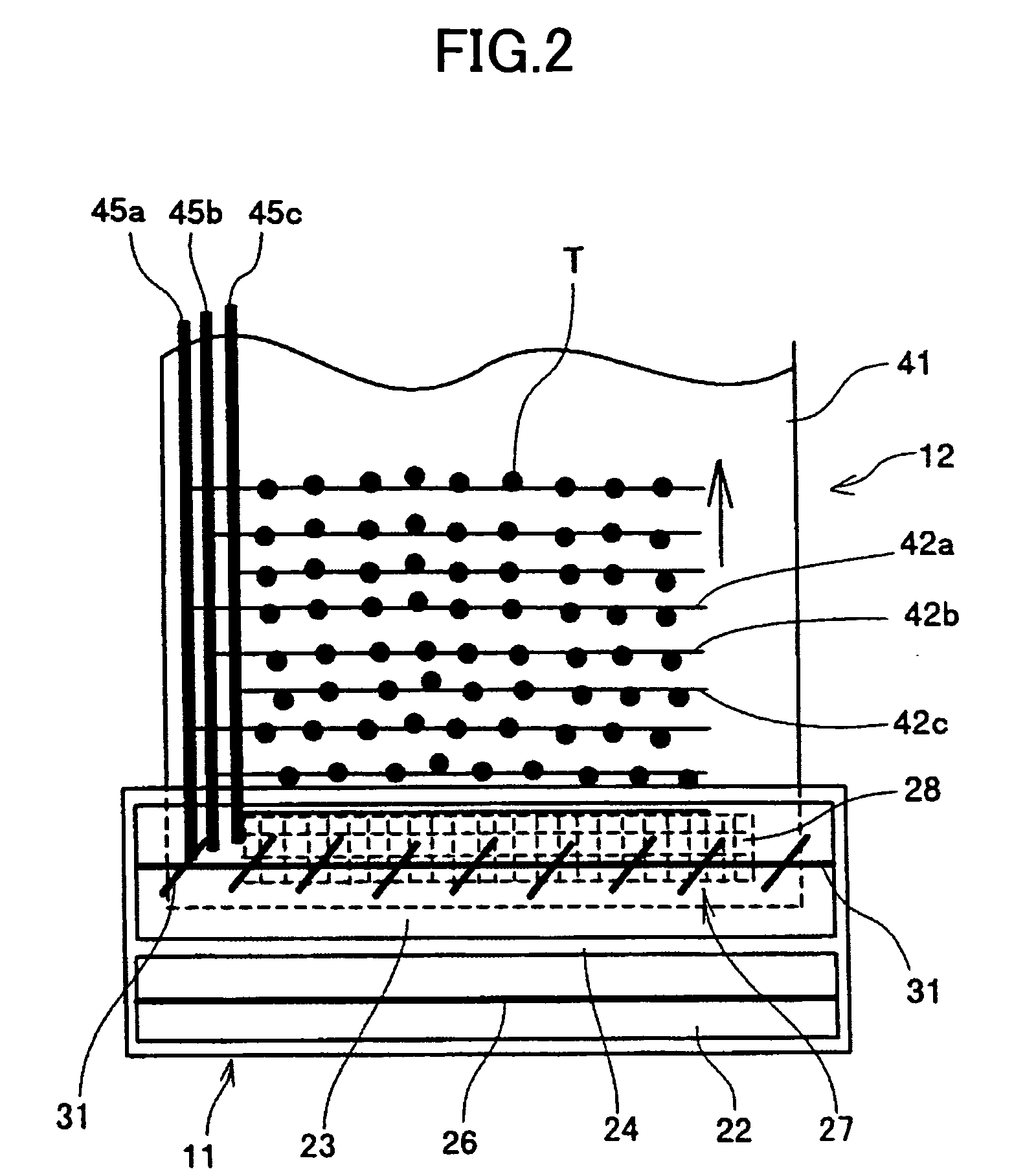Image forming apparatus and process cartridge
a technology of image forming apparatus and process cartridge, which is applied in the direction of electrographic process apparatus, instruments, developers, etc., can solve the problems of reducing image quality, reducing development performance, and lowering transfer efficiency, so as to improve both transfer efficiency and image quality
- Summary
- Abstract
- Description
- Claims
- Application Information
AI Technical Summary
Benefits of technology
Problems solved by technology
Method used
Image
Examples
Embodiment Construction
[0059] Below, preferred embodiments of the present invention are explained with reference to the accompanying drawings.
[0060]FIG. 1 is a view schematically showing a configuration of a developing portion of an image forming apparatus according to an embodiment of the present invention.
[0061]FIG. 2 is a plan view schematically showing the configuration of the developing portion of the image forming apparatus as illustrated in FIG. 1.
[0062] The image forming apparatus includes an image carrier 1 including an organic photo-conductor with latent images formed thereon, and an electrostatic developing device 2 which develops the latent images on the image carrier 1 by using a two-composition developing agent including a toner T and a carrier C while transporting the toner T by a traveling wave electric field. That is, here, the developing device 2 is exemplified to be an electrostatic developing device. In FIG. 1, it is illustrated that the image carrier 1 is in a form of a drum, but t...
PUM
 Login to View More
Login to View More Abstract
Description
Claims
Application Information
 Login to View More
Login to View More - R&D
- Intellectual Property
- Life Sciences
- Materials
- Tech Scout
- Unparalleled Data Quality
- Higher Quality Content
- 60% Fewer Hallucinations
Browse by: Latest US Patents, China's latest patents, Technical Efficacy Thesaurus, Application Domain, Technology Topic, Popular Technical Reports.
© 2025 PatSnap. All rights reserved.Legal|Privacy policy|Modern Slavery Act Transparency Statement|Sitemap|About US| Contact US: help@patsnap.com



